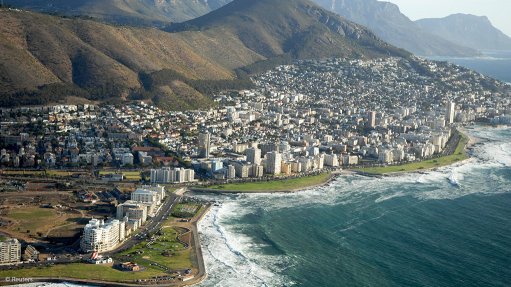
Cape Town
The final environmental-impact assessment (EIA) scoping report for the proposed realignment of the existing primary runway at the Cape Town International Airport has been published for public comment, giving stakeholders the opportunity until August 1 to comment.
The proposed realigned runway would be 3 500 m in length and would be built to international specifications, which would allow larger aircraft to land at the airport, thus enabling airport expansion and to increase capacity.
Realigning the runway would also alleviate current development constraints and allow for the more efficient future expansion of the airport.
The scope of work assessed by consultants SRK Consulting during the EIA process included the realignment of the runway; the construction of associated airport infrastructure, such as taxiways; proposed bulk earthworks to the east of the airport; the potential capacity increases that would be provided for by the development; and the associated increase in external public road traffic.
In the scoping report, SRK noted that the proposed project footprint was about 700 ha, with construction expected to take between 24 and 30 months to complete.
Construction activities that would disrupt the operation of the existing runway would take place at night for four months.
Key environmental issues identified by SRK included impacts on air quality, owing to a potential increase in emissions from increased aircraft numbers and dust generated by the proposed bulk earthworks, as well as a potential increase in noise levels on some areas surrounding the airport with a shift in flight paths.
The loss of wetlands on the land east of the existing airport as a result of the bulk earthworks was also a concern, along with the loss of remaining indigenous vegetation and habitats on this land.
Further, excessive earthworks and the clearing of invasive alien vegetation to the east of the airport could also potentially affect the groundwater, the study found.
Socioeconomic factors identified included a potential increase in nuisance factors, such as noise and dust, and impacts on land use.
However, local and regional economic benefits were also expected owing to the growth in tourism and import and export activity at the airport.
Should this expansion continue, there would also be an increase in demand for other modes of transport to and from the airport associated with the increase in airport capacity, SRK said.
To deal with the potential issues and impacts identified in the scoping report, SRK proposed a range of specialist studies be undertaken.
These included studies on air quality, noise and vibration, aquatic ecology, terrestrial ecology, hydrogeology, socioeconomic factors and transport.
Further, specialist input, rather than a full specialist study, was recommended for stormwater and visual aspects.
“Specialists will be required to provide detailed baseline information and to identify and assess the potential impacts of the proposed project within their particular field of study.
“In addition, specialists will be required to identify practicable mitigation and optimisation measures to avoid or minimise potential negative impacts and/or enhance any benefits. SRK’s standard impact rating methodology will be employed in the assessment of impacts,” SRK stated in the report.
Once the specialist studies had been completed, the results would be collated into an EIA report and an environmental management plan.